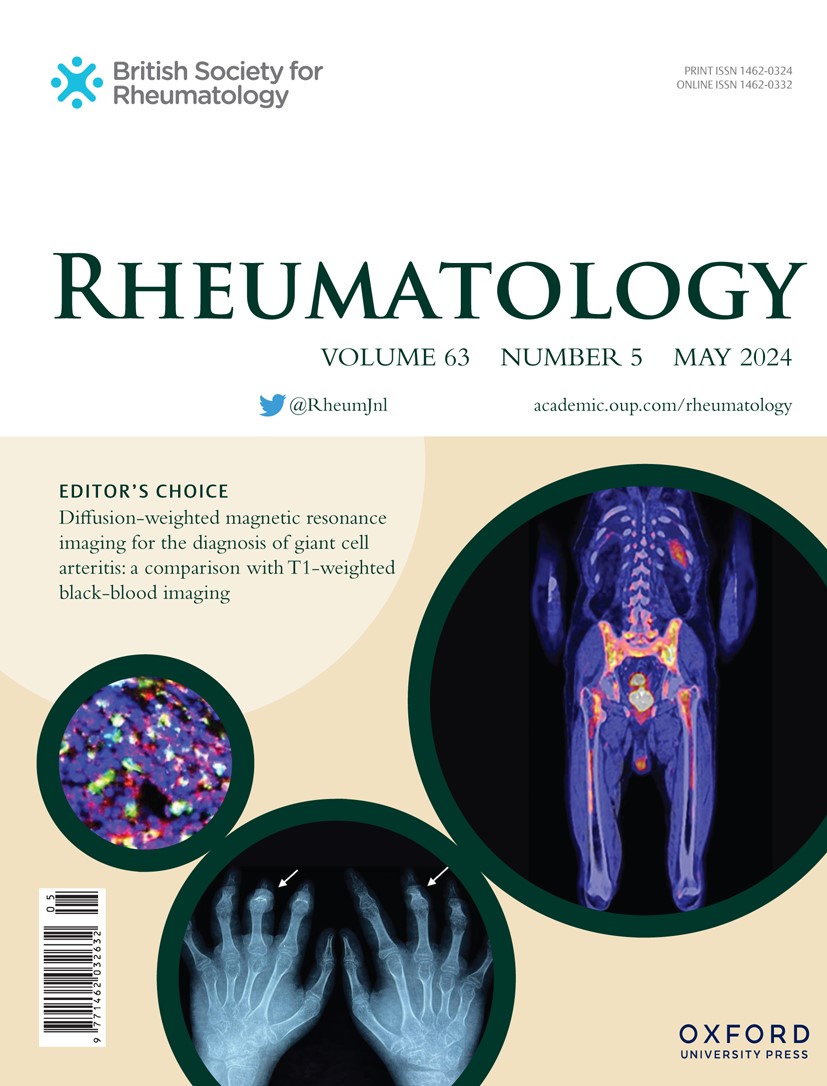Pregnancy outcomes after maternal and paternal anti-IL-1 treatment exposure in cryopyrin associated periodic syndromes (CAPS)
IF 4.7
2区 医学
Q1 RHEUMATOLOGY
引用次数: 0
Abstract
Objectives To determine the effect of paternal and maternal anti-IL-1 treatment exposures on pregnancies and neonatal outcomes in CAPS. Methods A single-center study consecutive adult CAPS patients and their partners was performed between January 2012 and July 2024. All were screened for pregnancies and anti-IL-1 exposure before conception and/or during pregnancy; teratogenic co-therapies resulted in exclusion. Data included patient characteristics, disease activity, anti-IL-1 treatment, pregnancy complications, neonatal outcomes and child health trajectories. Results Among 112 patients 11 pregnancies were recorded including eight maternal and three paternal anti-IL-1 exposures. All patients had moderate CAPS, 43% had hearing loss. At conception, all patients received canakinumab. Among the eight maternal exposures, six switched to anakinra, one refused the switch and continued canakinumab, and one had to be switched back to canakinumab due to significant local injection reactions. Pregnancy complications included one miscarriage and one preterm birth, both associated with disease activity. Neonatal outcomes were favorable, with a mean gestational age of 37 + 6 weeks and an average birth weight of 3028 g. No congenital malformations were observed. Neonatal complications included one presumed sepsis (culture negative) requiring IV antibiotics and one mild RSV infection. CAPS was diagnosed in five of 11 offspring, all of whom achieved effective disease control early, with no cases of hearing loss or amyloidosis. Conclusion In summary, the benefit risk ratio of maternal and paternal anti-IL-1 exposure during conception and pregnancy in our CAPS patients was favourable. CAPS disease activity may have a significant impact on development of pregnancy complications.母体和父亲暴露于抗il -1治疗后低温pyrin相关周期综合征(CAPS)的妊娠结局
目的探讨父亲和母亲抗il -1治疗暴露对CAPS妊娠和新生儿结局的影响。方法2012年1月至2024年7月对连续成年CAPS患者及其伴侣进行单中心研究。所有人都在怀孕前和/或怀孕期间接受了妊娠和抗il -1暴露筛查;致畸联合治疗导致排除。数据包括患者特征、疾病活动度、抗il -1治疗、妊娠并发症、新生儿结局和儿童健康轨迹。结果112例患者中有11例妊娠记录,其中8例为母体暴露,3例为父亲暴露。所有患者均有中度CAPS, 43%有听力损失。在受孕时,所有患者都接受了canakinumab治疗。在8例母体暴露中,6例切换到阿那单抗,1例拒绝切换并继续使用canakinumab, 1例由于明显的局部注射反应而不得不切换回canakinumab。妊娠并发症包括一例流产和一例早产,两者都与疾病活动有关。新生儿结局良好,平均胎龄为37 + 6周,平均出生体重为3028 g。未见先天性畸形。新生儿并发症包括1例推定败血症(培养阴性),需要静脉注射抗生素,1例轻度RSV感染。11名后代中有5名被诊断为cap,所有这些后代都在早期获得了有效的疾病控制,没有听力损失或淀粉样变病例。结论综上所述,在我们的CAPS患者中,母体和父亲在妊娠期暴露抗il -1的获益风险比是有利的。CAPS疾病活动可能对妊娠并发症的发生有重大影响。
本文章由计算机程序翻译,如有差异,请以英文原文为准。
求助全文
约1分钟内获得全文
求助全文
来源期刊

Rheumatology
医学-风湿病学
CiteScore
9.40
自引率
7.30%
发文量
1091
审稿时长
2 months
期刊介绍:
Rheumatology strives to support research and discovery by publishing the highest quality original scientific papers with a focus on basic, clinical and translational research. The journal’s subject areas cover a wide range of paediatric and adult rheumatological conditions from an international perspective. It is an official journal of the British Society for Rheumatology, published by Oxford University Press.
Rheumatology publishes original articles, reviews, editorials, guidelines, concise reports, meta-analyses, original case reports, clinical vignettes, letters and matters arising from published material. The journal takes pride in serving the global rheumatology community, with a focus on high societal impact in the form of podcasts, videos and extended social media presence, and utilizing metrics such as Altmetric. Keep up to date by following the journal on Twitter @RheumJnl.
 求助内容:
求助内容: 应助结果提醒方式:
应助结果提醒方式:


